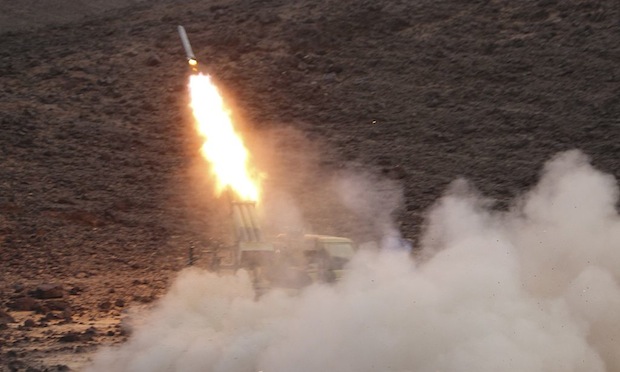UN report says missile launchers found in Yemen appear to be from Iran
UN secretary general Antonio Guterres did not specifically state whether the discovery of the units in Yemen was a violation of a UN resolution

Two launch units for anti-tank guided missiles recovered by a Saudi-led military coalition in Yemen appear to have been manufactured in Iran during 2016 and 2017, according to a confidential United Nations report seen by Reuters on Tuesday.
UN secretary general Antonio Guterres does not specifically state whether the discovery of the units in Yemen was a violation of a UN resolution that took effect in January 2016. It prevents Iran from importing and exporting arms or related materiel unless the Security Council has given approval.
“The Secretariat found that they had characteristics of Iranian manufacture and that their markings indicated production dates in 2016 and 2017,” Guterres said in his biannual report to the Security Council on the implementation of sanctions on Iran.
“The Secretariat also examined a partly disassembled surface-to-air missile seized by the Saudi-led coalition and observed that its features appeared to be consistent with those of an Iranian missile,” he wrote.
A proxy war is playing out in Yemen between Iran and Saudi Arabia. The Saudi-led coalition intervened in 2015, backing government forces fighting the Iran-allied Houthis. The Houthis have been subject to a separate arms embargo since 2015. Iran has repeatedly denied supplying weapons to the Houthis.
The UN Security Council is due to discuss the latest report from Guterres on Wednesday, diplomats said.
The United States has loudly and unsuccessfully pushed the United Nations to hold Iran accountable over accusations it is meddling in the wars in Syria and Yemen and elsewhere in the Middle East. Top US diplomat Mike Pompeo is scheduled to attend the Security Council meeting on Wednesday.
In February Russia vetoed a Western attempt to have the Security Council call out Tehran in a resolution on Yemen.
Guterres also said the United Nations had examined the debris of three more ballistic missiles fired at Saudi Arabia on March 25 and April 11, 2018, and found “specific key design features consistent with those of the Iranian Qiam-1 short-range ballistic missile.” It could not determine if it was a violation as it was unknown when they were transferred to Yemen, however.
Read: Yemen’s Houthis halt missile attacks on Saudi coalition
He said the United Nations “is still working on establishing the production date range of guidance subcomponents with the assistance of the foreign manufacturers.”
In his June report, Guterres said debris from five missiles fired at Saudi Arabia by the Houthis since July 2017 “share key design features with a known type of missile” manufactured by Iran and some components were manufactured in Iran, but also could not determine when they were transferred to Yemen.
Most UN sanctions imposed on Iran were lifted in January 2016 when the UN nuclear watchdog confirmed that Tehran fulfilled commitments under a nuclear deal with Britain, France, Germany, China, Russia and the United States. But Iran is still subject to a U.N. arms embargo and other restrictions.
The UN sanctions and restrictions on Iran are contained in a resolution that also enshrines the 2015 Iran nuclear deal, which US President Donald Trump withdrew Washington from in May. European powers have been scrambling to salvage the deal.
In the UN report, Guterres called on all countries to “ensure the continuity of this agreement that is fundamental to regional and international peace and security.”
